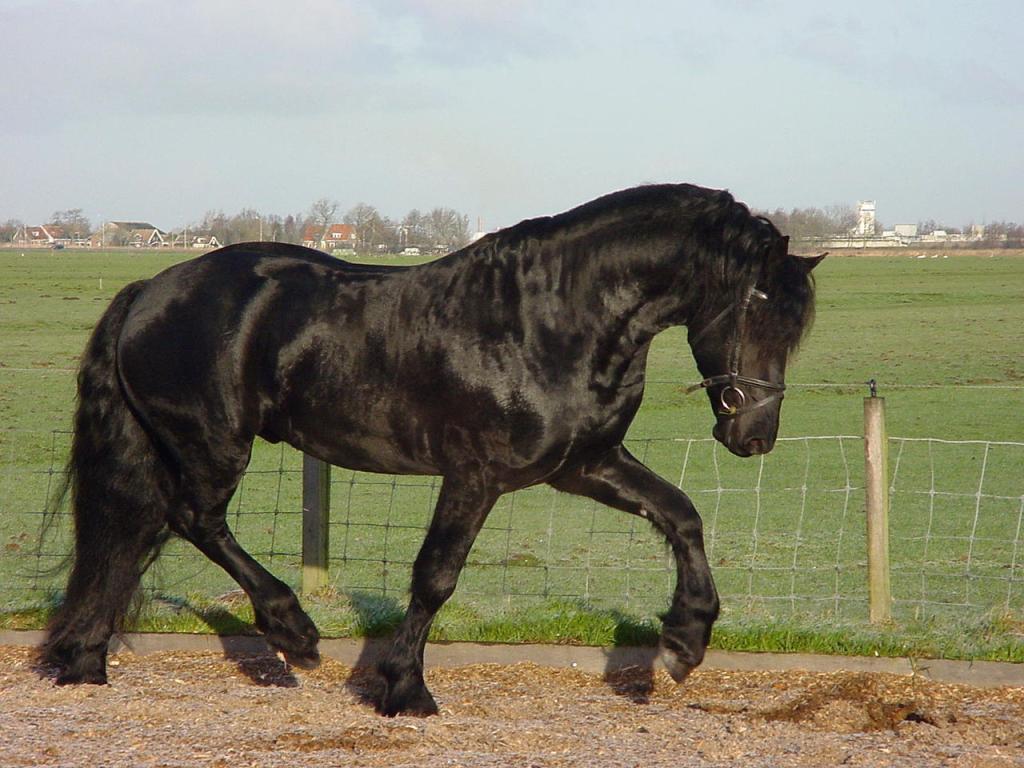
Continent: Europe
Country: Netherlands
Weight: 500 – 700 kg
Height: 155 – 170 cm
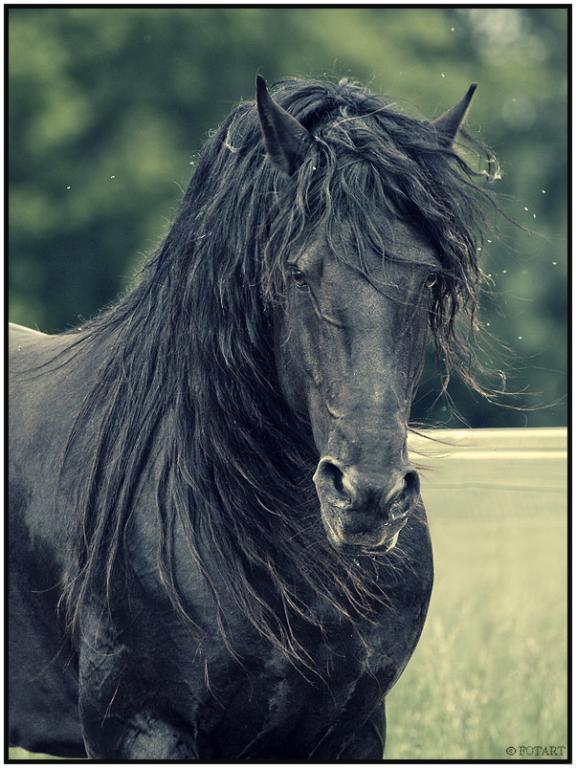
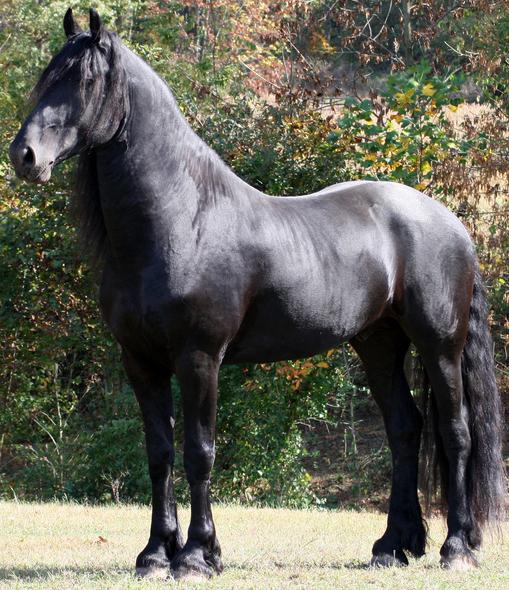
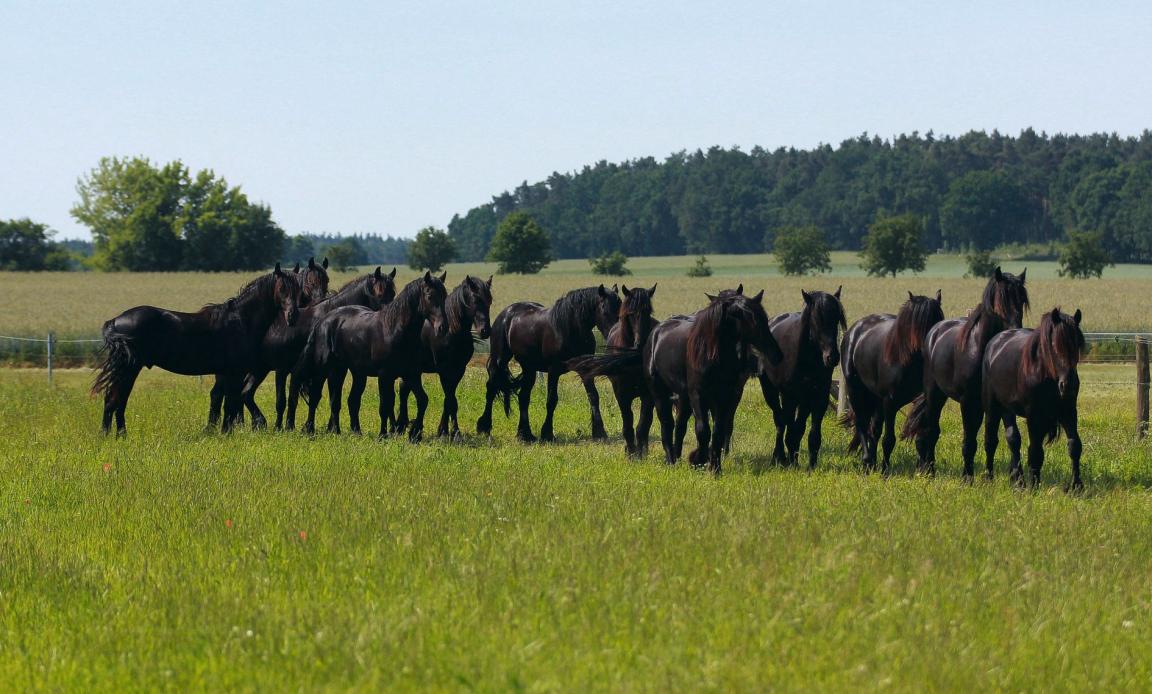
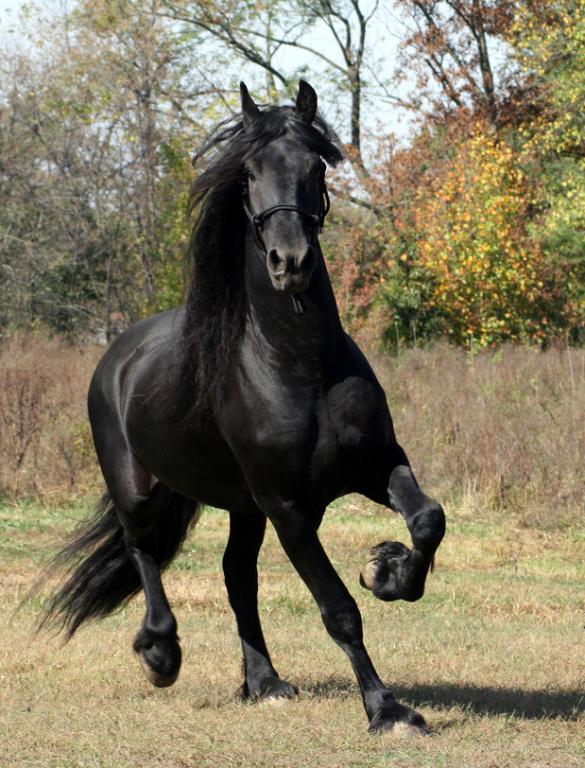
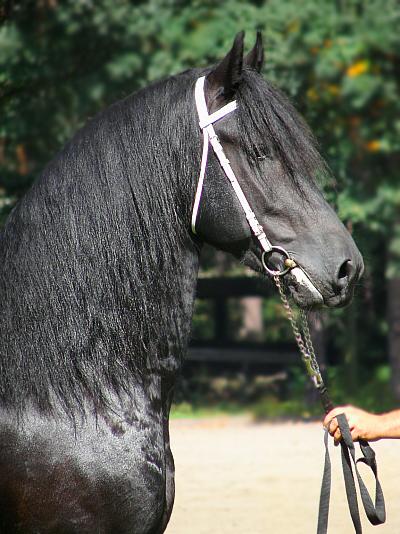
The Friesian originates from the province of Friesland in the northern Netherlands. This region, bordered by the North Sea, shaped a rustic, enduring, and powerful breed.
Used as a warhorse since the Middle Ages, the Friesian has endured through the centuries, retaining its identity thanks in particular to the Frisians’ attachment to their horse. The establishment of the stud book in 1879 made it possible to preserve this emblematic bloodline.
Although Friesland remains its traditional cradle, the breeding of the Friesian has spread throughout the Netherlands, supported by the FPS studbook, which manages genealogical records. Specialized stud farms, often family-run, continue this tradition with great attention to selection.
Since the 20th century, the breed has conquered many countries. The United States now has one of the largest populations of Friesians outside Europe, thanks to the creation of the Friesian Horse Association of North America (FHANA). Germany, Denmark, France, the United Kingdom, and the Scandinavian countries also hold significant populations, with breeders affiliated to the official studbook.
Friesian breeding can now be found as far as Australia, Latin America, and even Asia, demonstrating the breed’s global influence. Despite this expansion, the Netherlands remains the nerve center of breeding and selection, ensuring the preservation of the breed’s morphological standard and traditional qualities.
The Friesian horse represents a rare and ancient genetic lineage, directly descending from the native horses of Friesland. Its relatively isolated evolution has allowed it to retain distinctive traits such as its solid black coat, abundant mane and tail, and naturally elevated gaits.
Over the centuries, the Friesian has played a key role in the development of other European breeds. Crosses with Iberian horses helped shape certain saddle horse lines, while its strength and energy also influenced lighter draft breeds.
Today, the Friesian population remains limited, which creates a risk of inbreeding. The FPS studbook therefore enforces strict lineage management to maintain sufficient genetic diversity and to prevent the emergence of hereditary diseases.
Thanks to its strong identity and unique morphological and behavioral qualities, the Friesian constitutes a valuable genetic reservoir for the equine sector. It is sought after both for its purity and for its potential contribution to enhancing certain abilities, particularly in driving and in artistic or sporting disciplines.
The Friesian horse is one of the oldest breeds in Europe, originating from the province of Friesland, in the north of the Netherlands. Its roots go back to Antiquity: Roman writings already mention strong black horses from this region, used by the armies of Julius Caesar.
During the Middle Ages, the Friesian gained great fame as a warhorse. Its strength, proud bearing, and willing character made it a prized mount for heavily armored knights. Its elegant yet energetic movement also made it popular in tournaments.
Over the centuries, the Friesian influenced many European breeds. Crosses with Iberian horses (notably Andalusians) shaped its type, refining its silhouette and enhancing its high, expressive gaits features still visible today.
The modernization of agriculture and the rise of heavier draft horses led to the decline of the breed in the 19th century. The Friesian nearly disappeared, but dedicated enthusiasts founded in 1879 the “Friesch Paarden-Stamboek” (FPS), the oldest Dutch studbook, which saved and structured the breed.
In the 20th century, the Friesian regained a prestigious position, thanks to its beauty and versatility. Today, it is widely used in driving, dressage, shows, and cinema, while remaining a true symbol of Dutch cultural heritage.
The Friesian horse is renowned for its calm and docile nature, making it a valued partner for both amateur riders and professionals. Highly sensitive and responsive, it is generally easy to train when approached with patience and respect.
Behind its majestic appearance, the Friesian carries a generous energy. It enjoys working and shows a natural willingness in performing tasks. This explains its popularity in dressage, where it displays powerful, elevated gaits, as well as in driving, where its dynamism and presence are truly striking.
In breeding facilities or pastures, the Friesian is a sociable horse, usually getting along well with other horses. Its calm temperament limits conflicts, making it easy to integrate within a herd.
Often described as a faithful horse, the Friesian tends to form strong bonds with its rider or caretaker. Thanks to its longevity and sturdiness, it is regarded as a trustworthy companion for many years.
“The Friesian embodies the perfect blend of power and gentleness a horse both majestic and deeply affectionate.”
One of the main priorities for the future of the Friesian horse is the conservation of its genetic heritage. The FPS studbook ensures that inbreeding is avoided by broadening the genetic base through rigorous selection and careful monitoring of bloodlines. This management is essential to guarantee the health and vitality of the breed.
The Friesian is experiencing growing popularity worldwide, particularly in the United States, Germany, and Scandinavia. This international demand provides sustainable economic development for breeders, while spreading the breed far beyond its native land.
An increasing number of Friesians are being selected for high-level dressage, thanks to their expressive gaits and impressive presence. Although sometimes less competitive than certain warmbloods, they captivate with their elegance and charisma. Their strong presence in driving, both sport and leisure, also reinforces their role in international competitions.
Current trends highlight horses that are both spectacular and versatile. The Friesian fits these expectations perfectly, combining beauty, strength, and docility. Many projects aim to promote its use in equestrian shows, tourism, and cinema, where it remains highly sought after.
The Friesian is overall a robust breed, but it presents certain genetic predispositions that require monitoring. Among the most frequent are :
Breeders affiliated with the KFPS perform genetic tests and enforce rigorous veterinary checks to limit the transmission of these conditions. Careful management, an adapted environment and a balanced diet generally enable the Friesian to remain healthy throughout its life.
Le Frison est particulièrement réputé pour son trot ample, cadencé et très relevé, avec une forte action des genoux (haute élévation des antérieurs) et une grande extension. Cette allure spectaculaire est très recherchée en attelage et en spectacle, car elle allie puissance, souplesse et esthétique.

Born on 04/01/2001
Dubbed "the most beautiful horse in the world," Frederik has distinguished himself in dressage, show business, and modeling. He has become an international star thanks to his spectacular mane, charisma, and viral videos.

